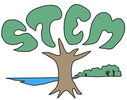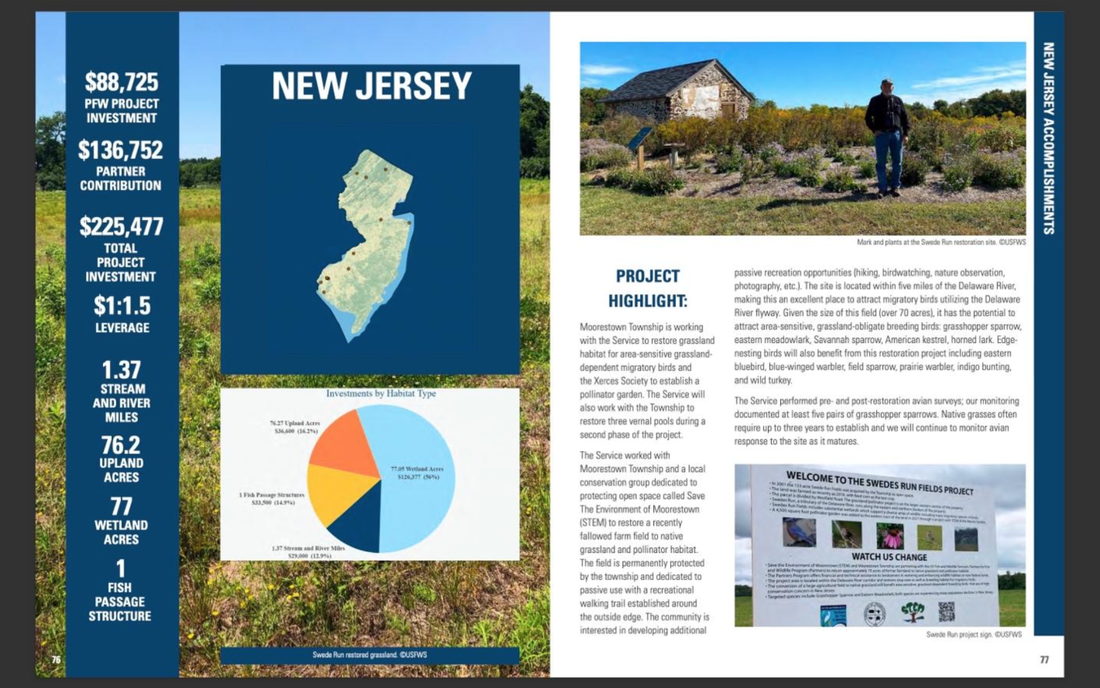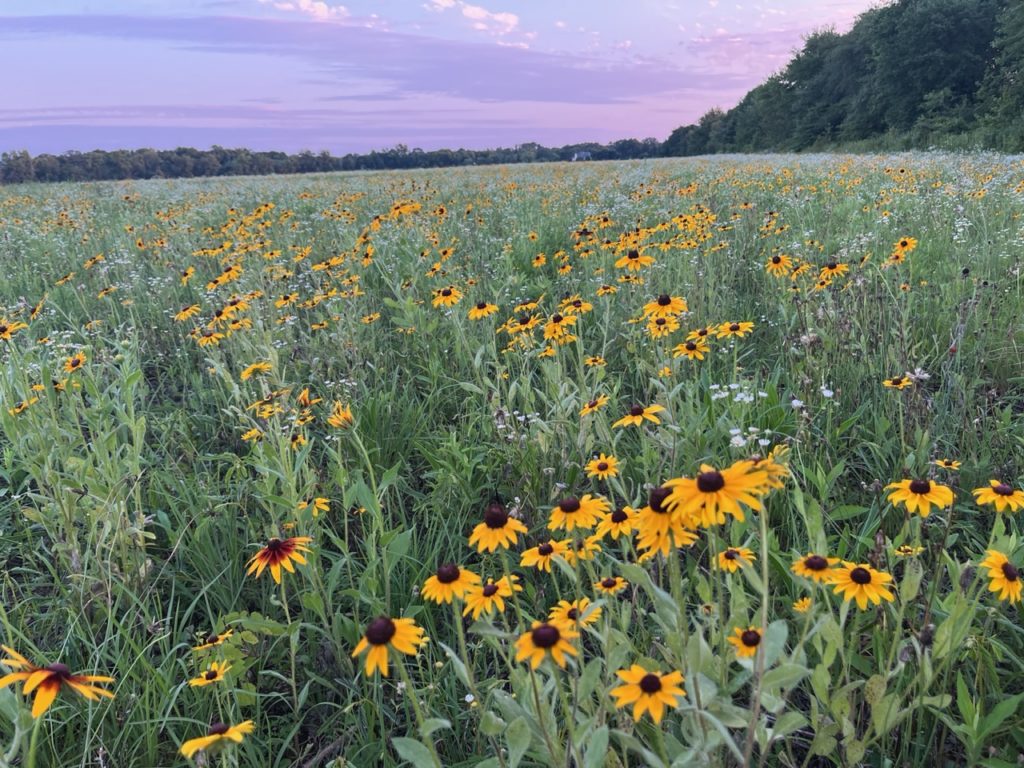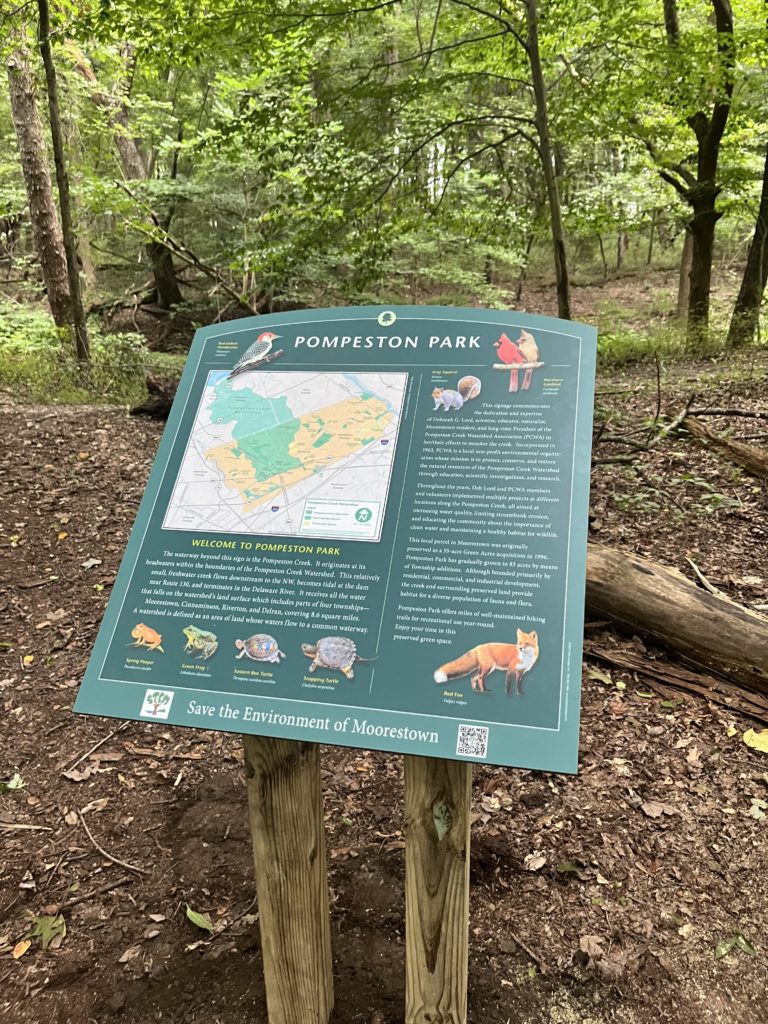US Fish and Wildlife Service Highlight STEM
STEM teamed with Moorestown Township and the US Fish and Wildlife Service, (through their Partners for Wildlife Program) to convert the 75-acre fallow farm field at Swede Run Fields into a native grass and pollinator field. Planting of the field occurred in the fall of 2021 and spring 2022. The project is ongoing, with planning currently underway for wetlands enhancement on the site.
The US Fish and Wildlife Service chose this project to highlight their Partners for Wildlife Program's success in New Jersey in 2022. STEM is very proud of their involvement in this project and looks forward to continuing our partnership with the Township and US F&W Service to continue to restore this beautiful property.
The US Fish and Wildlife Service chose this project to highlight their Partners for Wildlife Program's success in New Jersey in 2022. STEM is very proud of their involvement in this project and looks forward to continuing our partnership with the Township and US F&W Service to continue to restore this beautiful property.



